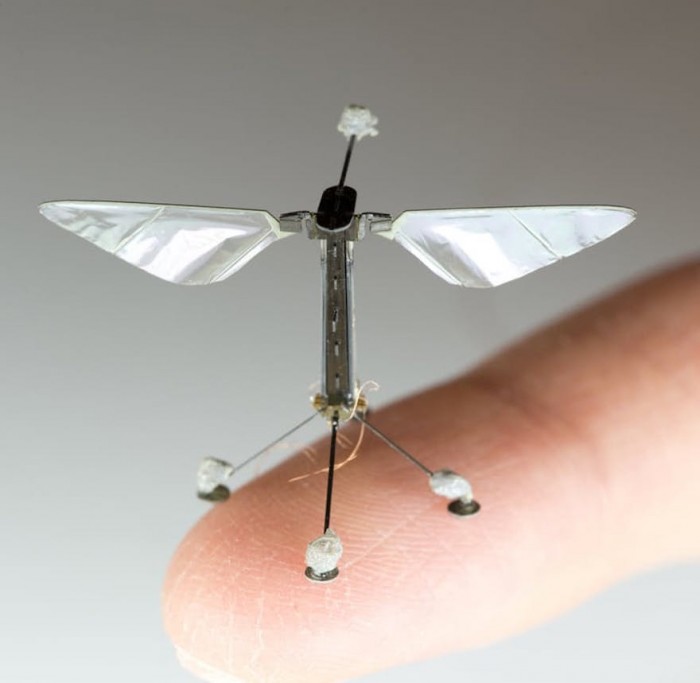From the Series
RoboBees were first introduced in 2013. Created by Harvard University researchers led by engineering professor Robert Wood, the insect-sized robots were at the time able to lift off the ground and hover in mid-air while attached to a power supply. Now, in their latest iteration, the mechanical bugs are able to perch using a small electrical charge. It’s predicted that the bots will be fully functional after 20 more years of research. But could they one day be used to replace a struggling bee population as agriculture’s primary pollinators?
“Bees and their swarm behaviour seem to be a very interesting research area for robotics. Developing RoboBees for pollination services though does not seem to be the right solution, but rather a technological fix representing an end of pipe solution,” said Christine Gebeneter, the communications coordinator for the European ecological farming project, Greenpeace.
Bee-killing pesticides are the leading cause of global bee decline. According to Greenpeace, industrial agriculture, parasites/pathogens and climate change all contribute to the death of the world’s pollinators. In particular, insecticides pose a direct risk to the honey bee and other wild pollinators. In September this year, millions of commercial honeybees died in South Carolina after being sprayed with an insecticide targeting Zika-carrying mosquitoes. The situation is common-place around the world.
A number of projects have sought to raise awareness of the plight of bees. Earlier this year, we reported on the Beedapest Hotel, a project aimed at raising awareness in a quirky way. We also looked at projects like The Hive and another project that aims to see 50 000 bee murals painted around the world. But scientists are looking at more and more new-age ways to look at the problem.
Mediated Matter, a group from the Massachusetts Institute of Technology (MIT) in the United States, recently revealed the first bee born in captivity. The Synthetic Apiary takes bees out of their natural habitat and places them into a specially designed apiary: stark white, temperature controlled and pesticide-free. While these researchers have sought to take bees away from danger, researchers at Harvard are developing a robotic bee able to withstand the harsh environment.
Speaking to Business Insider, Harvard graduate student and mechanical engineer Kevin Ma said the RoboBee could within 10 years be ready to pollinate a field of crops. But they would not act as a replacement. RoboBees would serve as "stopgap measure while other solutions are implemented.
But Greenpeace’s Gebeneter says the risks are too great. “The fact that scientists are researching a possibility to replace bees, shows how urgent the situation is and how serious the threat for our pollinators became.”
“It is scientifically proven that producing healthy, climate-friendly food in balance with nature is possible and already implemented by innovative modern ecological farmers around the world. Greenpeace is in favour of tackling the problem at its roots: banning pesticides, which harm bees and pollinators and switch from industrial agriculture towards ecological farming to preserve the environment, biodiversity, bees and other pollinators.”
While bio-inspired tools are an interesting and necessary form of research, it’s important to save the species we already have.






